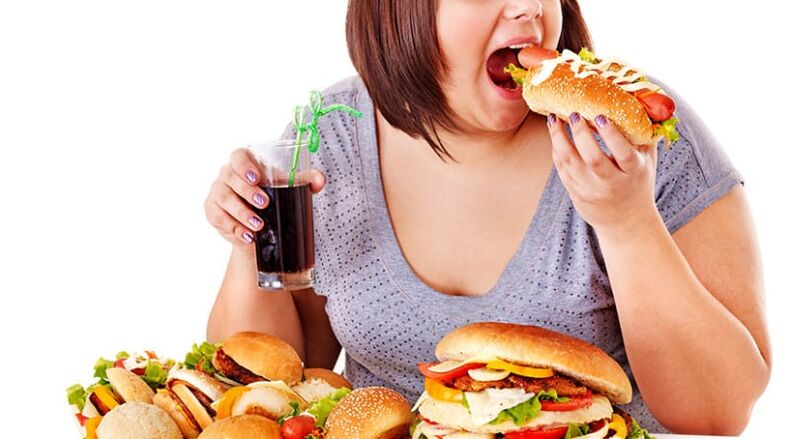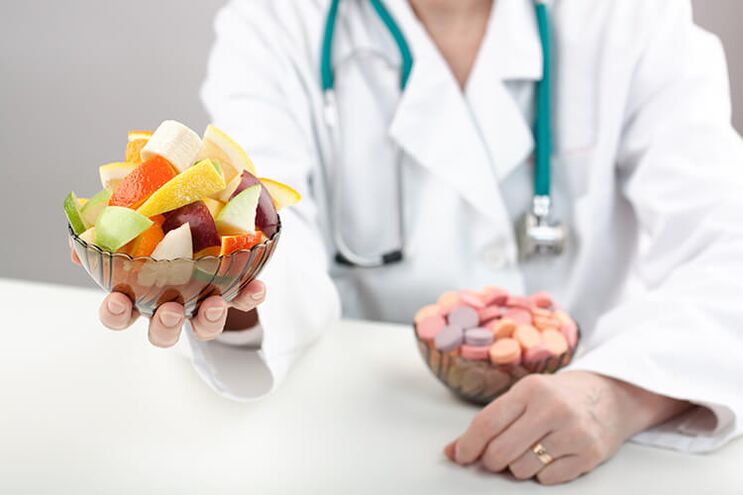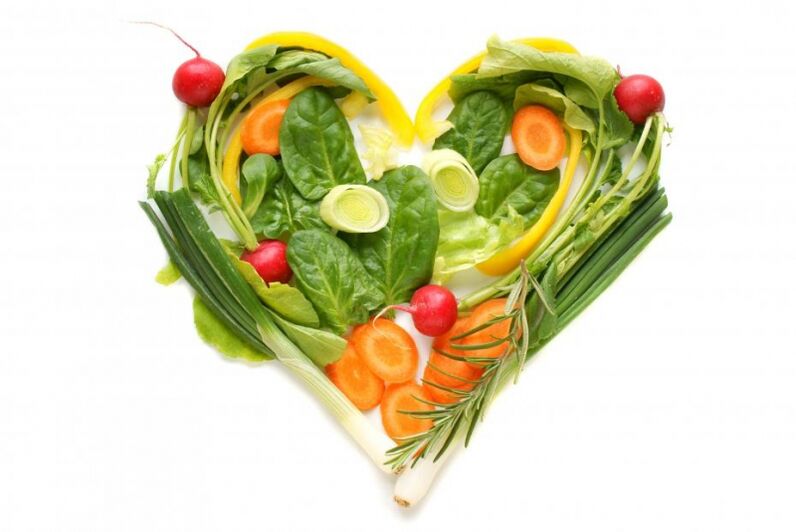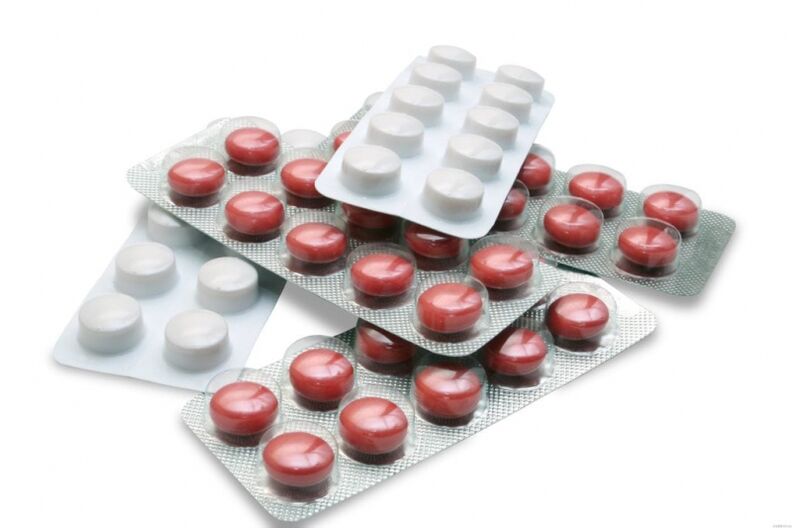Unfortunately, a disease such as type 2 diabetes affects more and more people each year. In terms of mortality, it ranks second, just behind cancer. The danger of such a disease is not only in the persistently high blood sugar level, but also in the deterioration of most bodily functions.
If "sweet" disease is left untreated, you can only minimize your risk of complications and avoid the insulin-dependent type of diabetes. To normalize sugar levels, endocrinologists primarily prescribe a low-carbohydrate diet and regular exercise therapy. It turns out that type 2 diabetes diet and nutritional treatment is the primary and primary therapy.
If with the help of dietary therapy it is not possible to achieve the desired result, you should start taking hypoglycemic drugs. It is also necessary to monitor the blood count with a home blood glucose meter.
Causes and symptoms

Diabetes refers to diseases of the endocrine system, when blood sugar levels are constantly elevated. This is due to a decrease in the sensitivity of cells, as well as tissues, to the hormone insulin, which is produced by the pancreas.
It is noteworthy that the body produces this hormone in sufficient quantities, but the cells do not respond to it. This condition is called insulin resistance.
There is no specific and unique cause of type 2 diabetes, but doctors have identified risk factors, one of which is age 40. It is at this age that DM is usually diagnosed. guess. But this does not mean that the disease has progressed badly. Chances are, the patient has simply ignored the symptoms of prediabetes for years, leaving the body exhausted.
Signs of SD:
- thirsty;
- Dry mouth;
- slow healing of wounds and abrasions;
- frequent urge to go to the toilet;
- rapid fatness;
- sleepy.
If at least one of the symptoms is present, you should see an endocrinologist for an analysis to rule out or confirm the presence of the disease. Diagnosis is quite simple - venous and capillary blood supply. If you know the symptoms and treatment will work.
Diabetes is more common in the following people:
- over 40 years old;
- overweight according to the abdominal pattern;
- malnutrition, when light carbohydrates (sweets, flour products) predominate in the diet;
- sedentary lifestyle without proper physical activity;
- High Blood Pressure;
- Presence of diabetes in relatives.
When treating "sweet sweet" disease, it is necessary to strictly follow a diet aimed at lowering blood sugar.
diet therapy

>A well-formulated therapeutic diet, along with moderate physical activity will become the mainstay of diabetes treatment. One of the main rules is not to starve and not to overeat. The number of meals is six times a day. Last dinner at least a couple of hours before bedtime.
Type 2 diabetes Diet and nutrition therapy stabilize blood sugar. Up to half of a daily serving should be vegetables. In addition, the daily menu must include cereals, fruit, meat or fish and dairy products.
The body of a diabetic is deficient in vitamins and minerals. This is due to a failure in metabolism not only of the endocrine system. That's why it's so important to eat a balanced diet.
From the above, it is possible to distinguish the main principles of the diet:
- small meals, six times a day;
- the minimum amount of liquid - two liters;
- not hungry and not overeating;
- dinner should be light, you should limit drinking a glass of fermented milk or 150 grams of cheese;
- fruit should be in breakfast;
- in the preparation of vegetable dishes, use only seasonal products;
- Select products by GI.
All diabetic foods should have a low glycemic index. Endocrinologists adhere to this indicator when compiling dietary therapy.
In addition to observing the principles of nutrition, one should not forget about the permissible heat treatment, which is aimed at the absence of bad cholesterol in dishes.
Cooking is allowed in the following ways:
- boil;
- for a couple;
- in the microwave;
- baked in the oven;
- in a multipurpose box;
- stew, using a small amount of vegetable oil.
It is necessary to study the concept of GI separately and learn to form a diet based on personal taste preferences.
After all, the choice of diabetic products is quite extensive and allows you to cook a variety of healthy dishes.
GI of products in dietary therapy

The glycemic index is a measure that reflects the impact of a certain food after eating on raising blood sugar levels. Low GI products contain complex carbohydrates that are easy to digest, which are not only essential for the patient, but also provide a feeling of fullness for a long time.
Diabetics need to choose foods with a low GI. Foods with an average index can only be included in the diet occasionally, no more than twice a week. High GI products can raise blood sugar levels by 4 mmol/l in a fairly short period of time.
The glycemic index of foods is divided into three categories. But beyond this value, you need to pay attention to the calorie content of food. So some foods have a value of zero units, but at the same time contain high levels of bad cholesterol and calories.
The light variety is fat-free, contains no carbohydrates, and has 0 units, but it is clearly contraindicated for diabetics. GI division:
- 0 - 50 units - low;
- 50 - 69 units - medium;
- over 70 units - high.
There is a special product table with indicators to make it easier for patients to create their own menus. Some products after heat treatment can significantly increase the index - these are radishes and carrots. They are allowed, but boiled according to the ban.
Therapeutic diet allows you to cook dishes from such vegetables:
- onion;
- all types of cabbage - white and red, Brussels sprouts, cauliflower, broccoli;
- garlic;
- eggplant;
- tomato;
- peas and asparagus;
- lentils;
- peas;
- squash;
- cucumber.

Many people are used to having potatoes on their table. But with the "sweet sweet" disease, it should be refused because of the high GI. In rare cases, when it is still decided to use tubers, they should be pre-soaked in water overnight. That way, you can get rid of the starch and slightly lower the stats.
Vegetables for diabetics are a source of vitamins, trace elements and fiber. They make not only fresh salads but also side dishes, as well as complex dishes. It is allowed to diversify the flavor quality with greens - spinach, lettuce, oregano, basil, dill and parsley.
Fruit is an equally important component of the diet. The permissible daily allowance should not exceed 150 - 200 grams. Fruits with a low index cannot be pressed. With this treatment, they lose fiber and glucose quickly enters the bloodstream.
When on a diet, you are allowed to eat the following fruits and berries:
- Cherry;
- apricots;
- Pear;
- nectarine;
- peach;
- black and red currants;
- all citrus fruit trees - oranges, lemons, grapefruits, tangerines, pomelos and lemons;
- gooseberries;
- sweet cherries;
- peaches.
In dried fruit there are many valuable substances, do not use more than 50 grams per day. Dried fruit is great to add to cereals, thereby creating a complete dish. Low GI dried fruit - dried apricots, prunes and figs.
Meat, offal, fish and seafood are also a daily part of the menu. At the same time, fish should be present at least three times in the weekly diet. Choose lean meats and fish. Skin and remaining fat are removed from them, in which there are no vitamins, but only bad cholesterol.
Endocrinologists recommend the use of the following products:
- Chicken;
- rabbit meat;
- Turkey;
- beef;
- quail;
- chicken liver;
- beef liver;
- beef tongue;
- cow lung.
There are no restrictions on the choice of seafood. From fish you can choose pollock, hake, pike or perch.
Cereals are a source of energy, so they feel full for a long time. Some varieties have a high GI, especially white rice. Its replacement would be brown (brown) rice, the GI of which is 50 units. Cooking time is a bit longer - about 45 minutes.
Barley is considered the most valuable grain, its GI index is only 22 units. Other grains are also allowed:
- barley flour;
- buckwheat;
- oatmeal;
- wheat porridge.
By the way, the thicker the porridge, the lower its stats.
There are some restrictions on dairy products and yogurt. All of them are based on the fat content of the product. Therefore, it makes sense to refuse sour cream, margarine and butter.
Medical treatment

If with the support of dietary therapy it is not possible to achieve the desired results, the doctor is forced to prescribe hypoglycemic drugs. Their choice in the pharmaceutical market is very wide.
Self-medication is prohibited, as all drugs have their own side effects. Only an endocrinologist can choose the right pills for the patient, taking into account the features of the body and the course of the disease.
The purpose of hypoglycemic drugs is to stimulate pancreatic cells to increase the production of the hormone insulin so that it is present in the blood in the required amounts.
If in this case it is not possible to normalize the level of glucose in the blood, then therapy includes several groups of hypoglycemic tablets.
Additional measures

When type 2 diabetes is present, treatment should include possible physical activity. This is a great compensation for the high sugar intake.
That is, when playing sports, the body will accelerate all metabolic processes, glucose is absorbed faster.
You should spend at least half an hour every day on this lesson. If you can't exercise every day, then at least you need to walk in the fresh air for forty minutes.
You can choose from the following types of physical activity for type 2 diabetics:
- yoga;
- Nordic walking;
- sports walking;
- running;
- Ride bicycle;
- swimming.
If one wants to study at home, then on the Internet there are many video courses specifically for diabetics.
If training takes place outside the home and they feel hungry afterwards, an extra meal is allowed - a snack. An ideal choice would be 50 grams of nuts, which contain nutritious protein, have a low GI and are a perfect appetite suppressant. Just do not exceed the daily allowance, because such a product has a high calorie content.
From all of the above, it can be concluded that the manifestations of diabetes can be minimized using two rules: adherence to the principles of diet therapy for diabetes and exercisefrequent.














































































